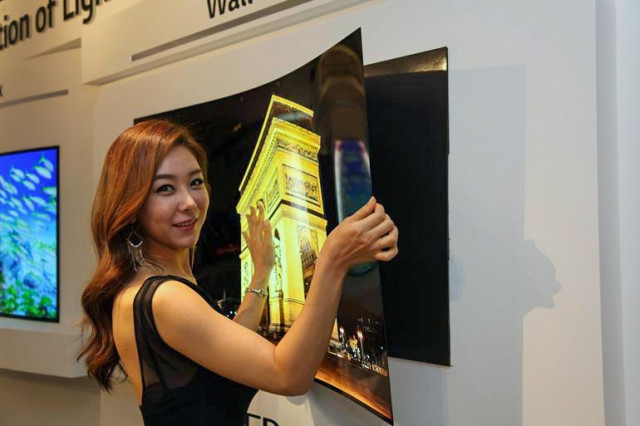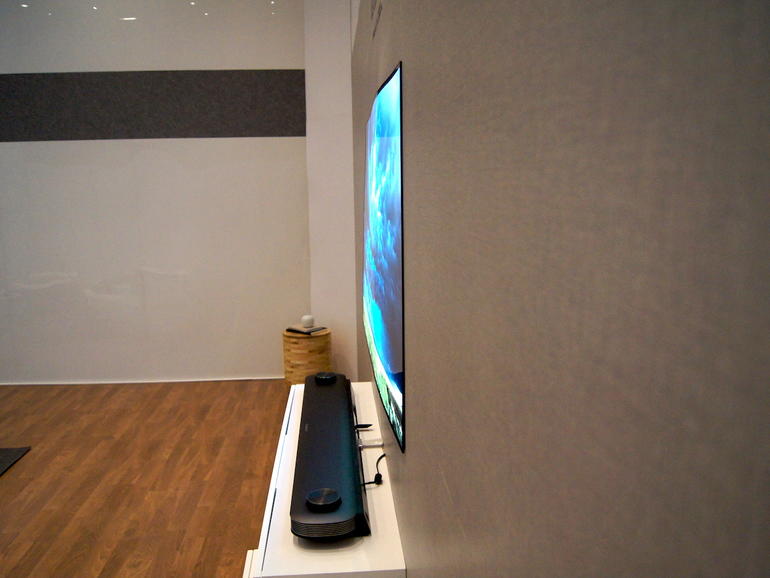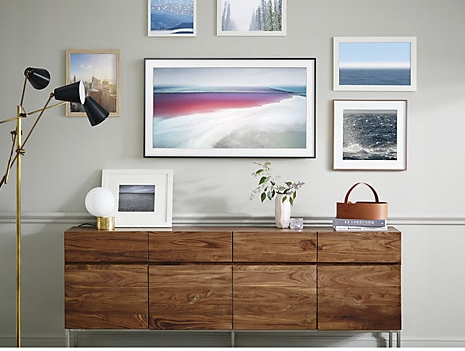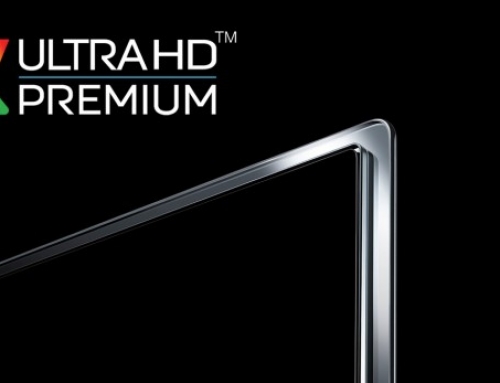LG ‘Wallpaper’ TV
Every so often something truly original comes along…. LG’s ‘Wallpaper’ TV, Otherwise known as the signature OLED W7 series. The LG wallpaper TV unique form factor makes it a stunning and quite astonishing TV to look at. It is truly super slim, just 2.75mm thin, or 4mm once installed on its magnetic wall bracket. It is the slimmest/sleekest TV ever made and represents the future of TV design.
Not just physically amazing, this OLED TV also delivers one of the best picture quality you can currently buy. That isn’t to say there aren’t caveats, the key one being that you can get the same picture quality for much less money by buying one of LG’s other 2017 OLED models. But if you did that you wouldn’t get a telly that looks like the W7: the thinnest, flattest TV there’s ever been – at 2.57mm thick it is slimmer than a pound coin. It’s less like having a picture frame on your wall, it’s more like turning a 65 or 77in section of your wall into a screen.
Before going into the detail, it should be noted that this level of performance/design is costly. The 65” version of the TV – the OLED65W7 – is £6,999. There is also a 77” version which is silly money. However, before you write this off, that’s exactly how much the standard OLED screens cost about a year ago– these have now dropped to half that price so it is certainly an option for the future if outside current budget.
The TV essentially comes in two parts which is why this TV is so unique and can be so slim; – there is the thin/flexible OLED Panel and a separate speaker unit/Soundbar which connects to the panel with a slim umbilical cord. This soundbar has all the connections for HDMI/aerial/power etc. The soundbar is also reasonably impressive with Dolby Atmos compatibility. Also in the box is the slim flat panel wall mount bracket – and yes, the TV has to be wall mounted – there is no stand mount alternative.
The main highlight of this TV is its astonishing slimness. The TV is also light and quite bendy – the 65” only weighs about 8Kg, which although it can be tricky to wall mount, any wall should be able to take the weight -although interestingly, websites state that it is not designed for plasterboard walls ! – I disagree with that statement. But whilst the screen is incredibly slim, it has a fair bit of flex to it – it can be peeled off the wall bracket ! – One of the ways LG saves space on the TV is by not including any internal speakers or connections – the only way to get volume out of the TV and connect to content is through the included separate soundbar speaker unit. The soundbar is probably the most significant feature about the TV which sets it apart from other models and the competition.
Whilst the soundbar is quite nice – boasting an out-of-the-box Dolby Atmos configuration and miles better than any normal TV speakers, it still isn’t anywhere near a home cinema surround sound set up – The other problem, of course, is that the TV has to connect to the soundbar to work, and so LG have produced a flat, white ribbon cable that – while not ugly, it means that this cable needs to be on show or concealed somehow in the wall which is a bit tricky. The Soundbar also needs a place to go, somewhere near the TV. Sadly, the soundbar cannot be wall mounted so needs to sit on a shelf or unit by the TV. If I had this TV in my own home, I would be tempted to hide the soundbar, disable the speakers and link audio to some in-wall or in-ceiling speakers instead, for a truly discreet set-up.
LG has stayed with webOS 3.5 operating system. – which is a versatile, easy-to-operate OS and plenty of content/options: Netflix, Amazon, YouTube, Vudu, Hulu and Google Play Movies and TV come preinstalled with the TV. If you can’t find what you’re looking for you can always select the screen cast function to mirror your mobile device – the only downside being that LG’s OLED TVs only support Android and Windows devices.
On the whole, 4K pictures look amazing and near flawless. OLED technology offers infinite contrast, the best black levels, individually lit pixels, simply gorgeous colour and contrast ratios that no LED/LCD screen can ever match. Not only do the rich, inky blacks look just as good as they did on last year’s panels, but the latest range of OLEDs have a 25% increase in brightness which was main drawback compared to LED-LCD screens. The biggest issue that LG’s panels face is how the set goes about handling motion and up-conversion of HD content. Straight out of the box, the W7 OLED comes with a feature called TruMotion turned on. Like many of TVs artificial picture processing enhancements, it should be turned off immediately. This TV supports both HDR10 and Dolby Vision content, meaning all this new technology can be displayed with amazing results.
In general slimline LCD/LED TVs don’t sound great on their own. They usually have low powered/poor sounding speakers that don’t provide an experience on par with what they’re seeing on the screen. This is the reason that soundbar sales have gone up so much in last few years. Therefore the W7’s inclusion of a Dolby Atmos soundbar is a bonus, and the better than any other TV manufacturer soundbar on the market. But while the soundbar out-perfoms traditional TV speakers, it’s not a true Dolby Atmos soundbar – it’s a two-channel soundbar with two additional speakers on top that actually don’t upfire at all.
Verdict:
There’s a lot to love about LG’s new W7 OLED TV. A super-slim frame, a Dolby Atmos soundbar, four types of HDR support, a magnetic mounting system and the new webOS 3.5 operating system. This incredibly gorgeous TV isn’t without its faults (motion handling, higher price and soundbar issues), but in terms of sheer picture performance/design there’s nothing else like it right now. But here’s the thing: you can get the same picture for a lot less money by choosing one of LG’s other 2017 OLEDs. The B7 and C7 are going to cost less than half the price of the W7, but they get exactly the same panel and processing tech so, even according to LG, the performance should be identical – only the sound and styling vary across the range.
If you’re looking to save some money and want to stick to an LG OLED, your best option might be LG’s B7 or C7 entry-level OLED screens that uses the same panel as the W7, but trades the soundbar/sleek design for a set of built-in speakers/connections in a traditional boxed section on the back of the TV. However, a recessed wall section could be built to overcome this design and give a similar effect.
Summary:
Positives
Incredibly slim design
Colour, clarity and contrast
Future-proof HDR 10 and Dolby Vision support
Magnetic strip wall mounting system
High quality Dolby Atmos soundbar
new webOS 3.5 operating system
Negatives
High Price – same panel is used in the cheaper LG OLED range
TV connection cable link to soundbar
Soundbar needs to be located near TV and is not wall mountable
Some Motion issues
Soundbar isn’t true Atmos










